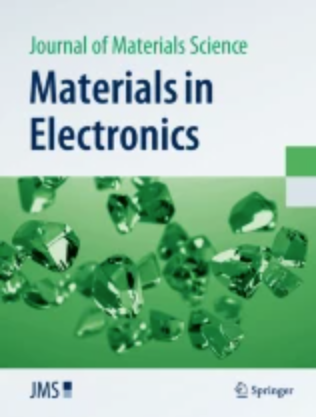Temperature-dependent current conduction properties and barrier inhomogeneity of Au/methylene blue (MB)/n-Ge heterostructure
Abstract
The electrical properties of Au/methylene blue (MB)/n-Ge heterostructure were investigated in a wide temperature range from 125 to 400 K. The device parameters such as barrier height, ideality factor and series resistance were determined using the thermionic emission (TE) model and Cheung’s method. The barrier height (Φb) and ideality factor (n) values of the Schottky contact were determined from the current–voltage (I–V) measurements and found to be 0.29 eV and 2.71 at 125 K and 0.93 eV and 1.04 at 400 K, respectively. In the presence of inhomogeneity at the metal–semiconductor contact, the barrier height was found to be decreased and the ideality factor increased with the decrease of temperature. From Cheung’s plot, the series resistance (Rs) was found to be reduced with the increase in temperature. Barrier inhomogeneity has been elucidated using the thermionic emission theory based on the assumption of Gaussian distribution of barrier heights. However, the divergence in Schottky barrier heights of Au/MB/n-Ge heterostructure evaluated from I–V measurements indicates deviation from the TE theory. The conventional Richardson plot between ln(Io/T2) vs. 1000/T gives an activation energy of 0.31 eV and Richardson constant (A*) of 1.14 × 10–9 Acm−2 K−2. The modified Richardson plot evaluated by assuming the Gaussian distribution of Φb shows an enhanced activation energy of 1.15 eV and A* of 209.28 Acm−2 K−2 which is close to the theoretical value of n-Ge. Current conduction mechanisms of the Au/MB/n-Ge contact in a wide temperature range are resolved into four linear regions (Region-I to Region-IV) with different slope factors. This shows that the interfacial layer (MB) significantly influences the electrical properties of the Au/n-Ge contacts measured in a wide temperature range. The interface state density distribution over the energy below the conduction band of the n-Ge is also studied in the temperature range from 125 to 400 K.

 求助内容:
求助内容: 应助结果提醒方式:
应助结果提醒方式:


